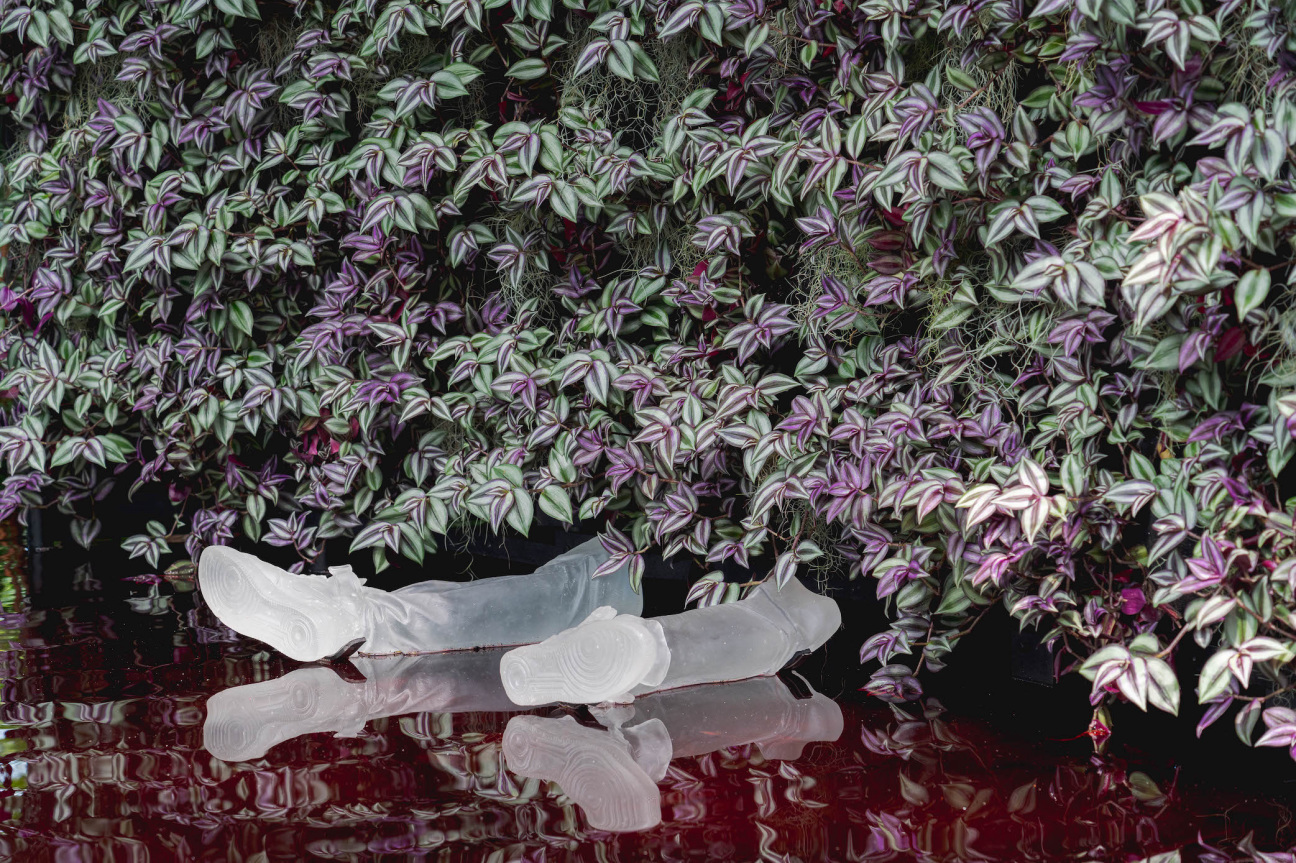
Anthony Fuentes, Jr. is pointing out something near the water, maybe the pair of glass-sculpted legs poking out from underneath the enormous wall of green and purple foliage. “I’ve never seen anything like this in the 25 years I’ve worked here,” says the security officer, after taking another look at the installation.
There have been many other art shows at the New York Botanical Garden—including an exhibition in 2021 with works by Yayoi Kusama installed across the buildings and lawns—but nothing quite like this one. The tableau is part of a larger plant and flower-filled installation that Ebony G. Patterson created for the conservatory at the Botanical Garden. Her exhibition, “…things come to thrive…in the shedding…in the molting…,” continues in the garden library with a collection of recent pieces ranging from works on paper to a large, freestanding fabric sculpture inside the rotunda.
The exhibition was conceived during her year-long residency, through which she worked with “the horticulturists and scientists and the exhibitions team to bring something new to life,” explains Joanna L. Groarke, vice president for exhibitions and programming. Patterson is the first artist-in-residence the NYBG has ever had—and as such, started visiting the gardens and having discussions with Groarke and her team about the show as early as 2019, shortly after Groarke introduced the idea of a residency after seeing Patterson’s 2018 show at the Pérez Art Museum Miami.
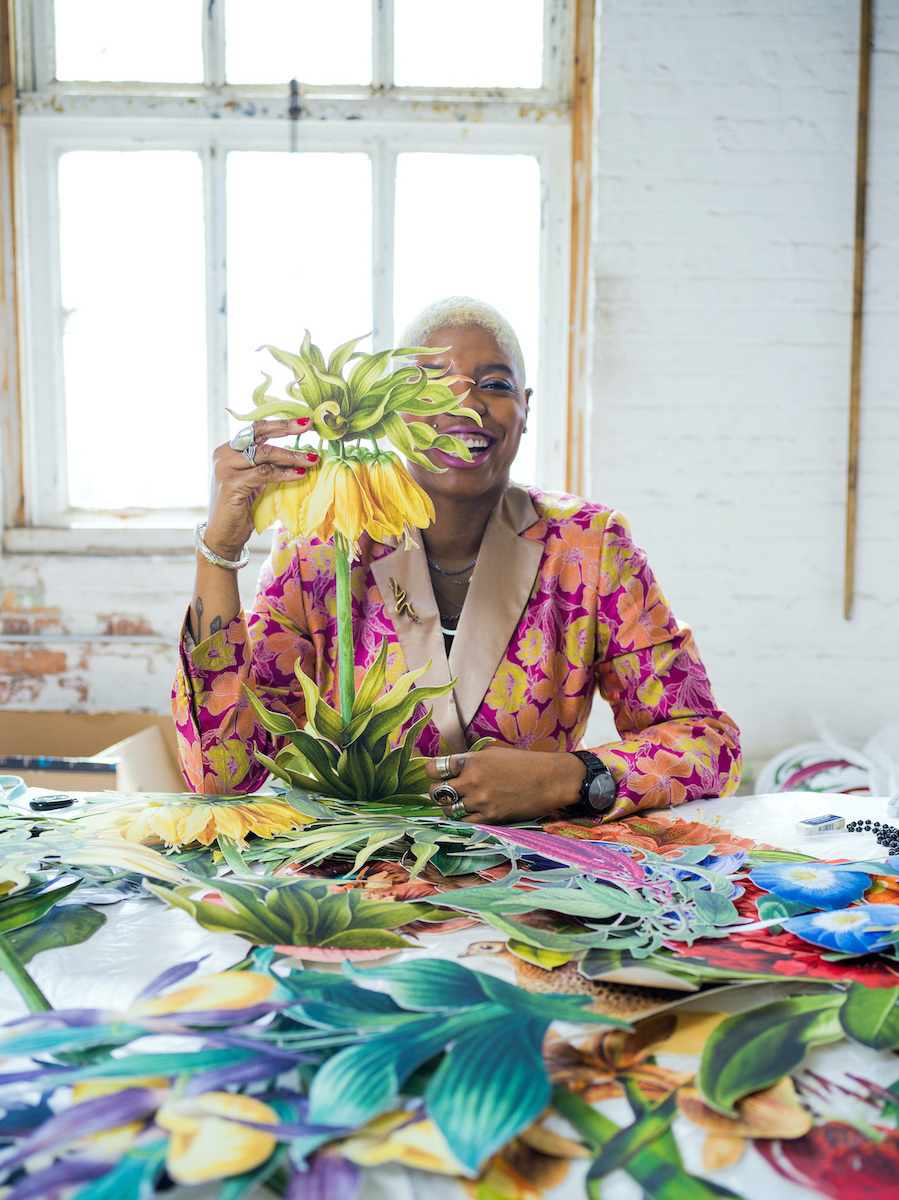
Beneath the green and purple plant wall display Fuentes was so taken by are metallic black vultures floating on lily pads in a pool of red water. “It’s blood. It’s definitely blood,” says Patterson, pondering what the pool is meant to represent. The scene is the culmination of a site-specific installation that begins outside the conservatory, with hundreds of black vultures taking over the lawn. Continuing inside the seasonal exhibition galleries, a large white peacock stands on a platform, peering back at many more. Surrounding them is an arrangement of bright red, orange, yellow, and white florals with a trail of dark burgundy plants piercing through the middle.
For the full installation, Patterson thought about “two recent works that were related to a peacock’s tail;” she uses the tail as a metaphor for the beauty at the surface of our landscape. But, she wonders, “What does that embellishment conceal?” By lifting it up and peering underneath, does one find “where all of the truth is hidden?”
Anyone familiar with Patterson’s work may see similarities to that 2018 exhibition at the Pérez Art Museum Miami, “…while the dew is still on the roses…,” where she designed an indoor moonlit garden with ominous elements lurking throughout, like a cluster of dark-colored shoes hanging from the ceiling. Or even to the garden-like environment she made in 2015 for the Museum of Arts and Design, using “silk plants that were all informed by plants that had poisonous properties,” she explains. The artist pulled from her knowledge of these varieties, as well as others with healing properties that she’s incorporated in her work, when choosing the species she wanted to include in the Botanical Garden show.
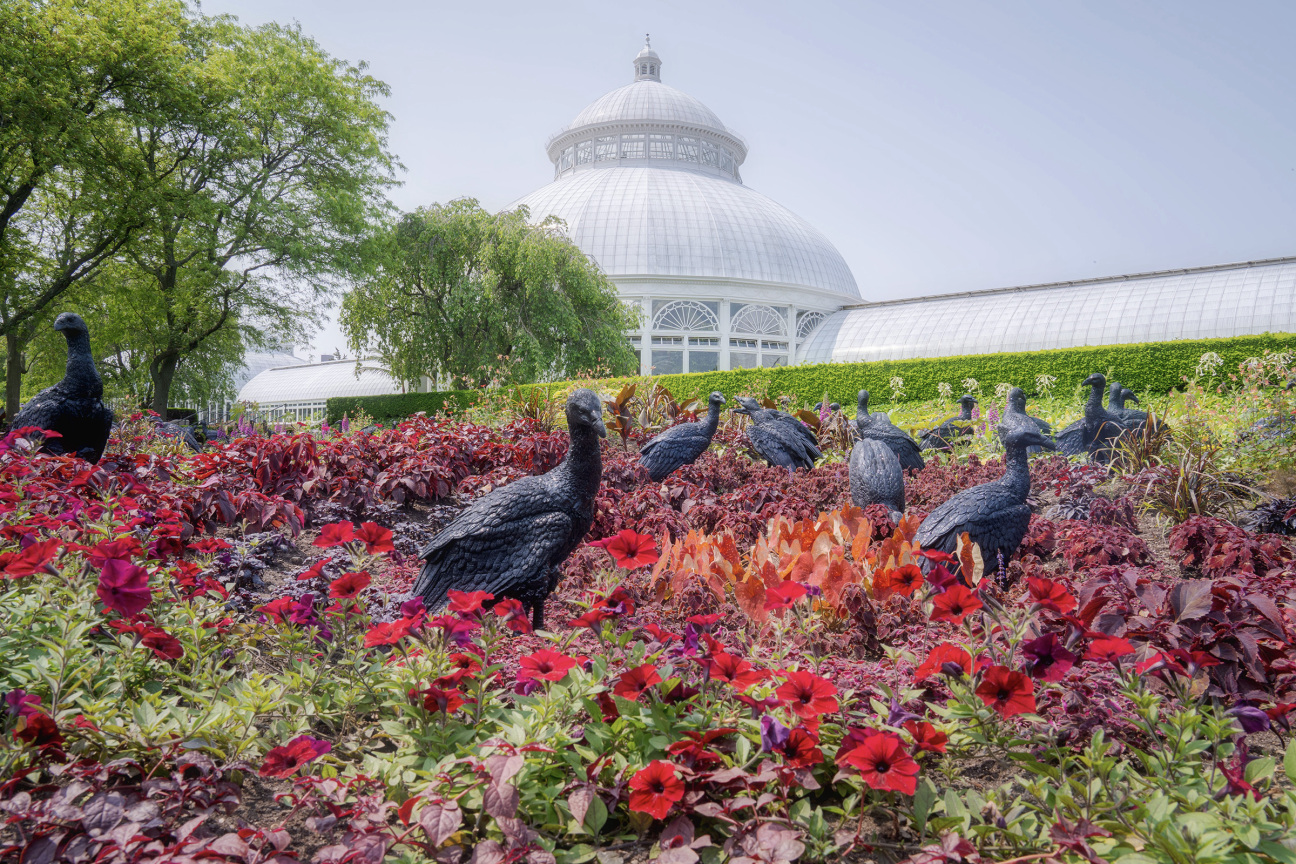
Which “is not to suggest that all the plants that viewers come to see are either poisonous or healing,” clarifies Patterson. She wanted the plants to invoke a wound that the vultures would come to peck at.
The vultures in the installation are a clear gesture towards the idea of death. But at the same time, Patterson explored their role within the broader ecosystem, and how by “consuming the landscape, they're revealing things within it,” she says. They’re consuming our nature’s wounds, “as an act of care … and in doing so, they reveal other things that are hidden, so bodies become revealed.”
Two upturned, dismembered sets of feet are peeking out from inside the flower beds. In the corridor leading to the Palms of the World Gallery, the plants and florals Patterson chose wear deeper hues—dark reds or moody purples. Among them are glass fabrications of extinct plant specimens Patterson discovered during her residency, resurrecting a forgotten past.
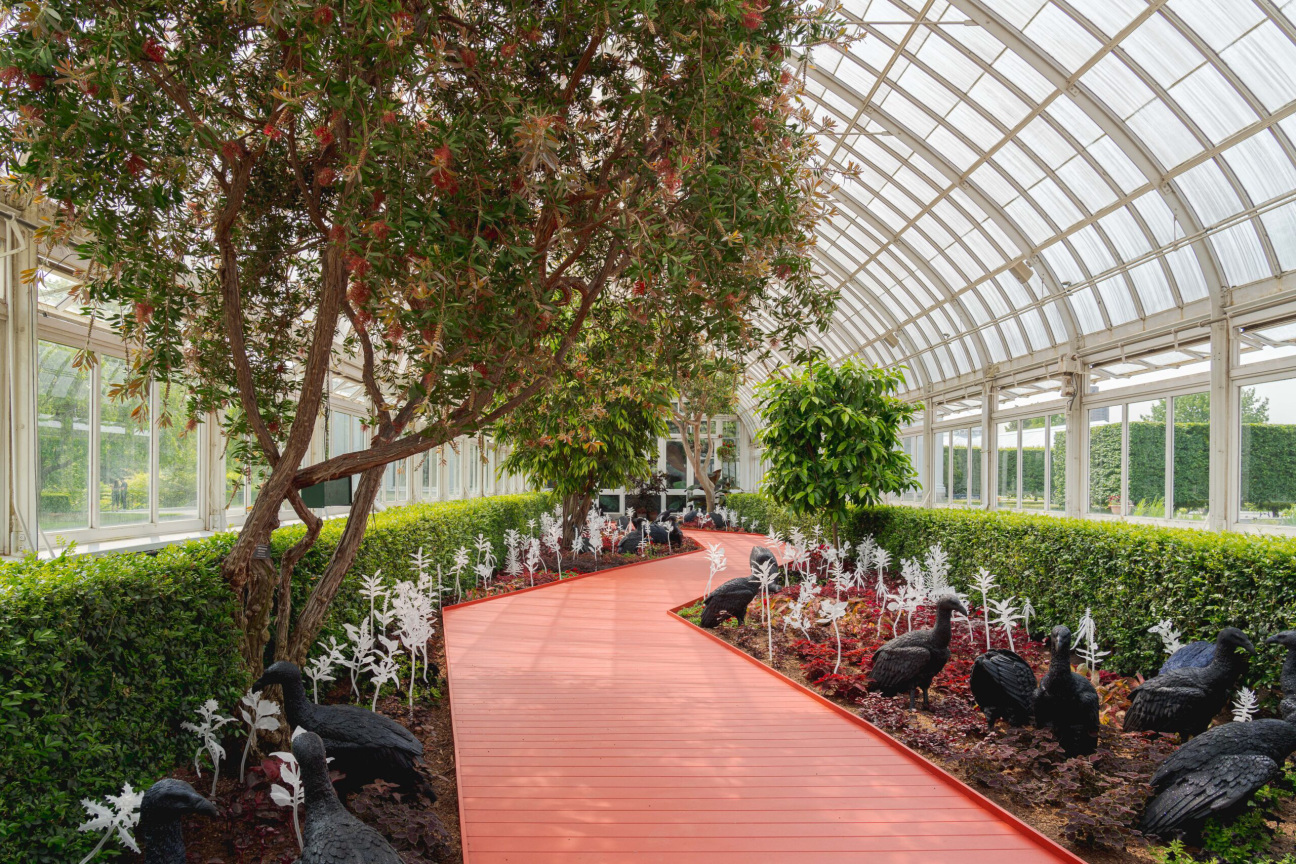
If one peels back the layers of Patterson’s own life, her interest in botanicals can be traced all the way “back to the beginning of my practice, when so much of the work that I was making was centered on conversations around dress and how dress becomes a tool of empowerment employed by working class Black people,” she explains. “So much of the clothing that I was using was highly patterned florals, and those florals that I would employ are no different to me than the plants that I actually ended up using.”
The next part of the exhibition is in the garden’s library, where Patterson again uses the peacock as a stand-in for our landscape. Thirty-eight embellished and patterned tapestries referencing the feathered skin of a peacock are pinned to the wall. Amid the folds are gold-leafed skeletal forms. So if the “skins” represent the top of the garden, the back of the installation depicts its roots—in the form of around 1500 red-laced hands. This exercise of peeling back, or uprooting in this case, is an effort to reveal what’s hidden underneath the surface.
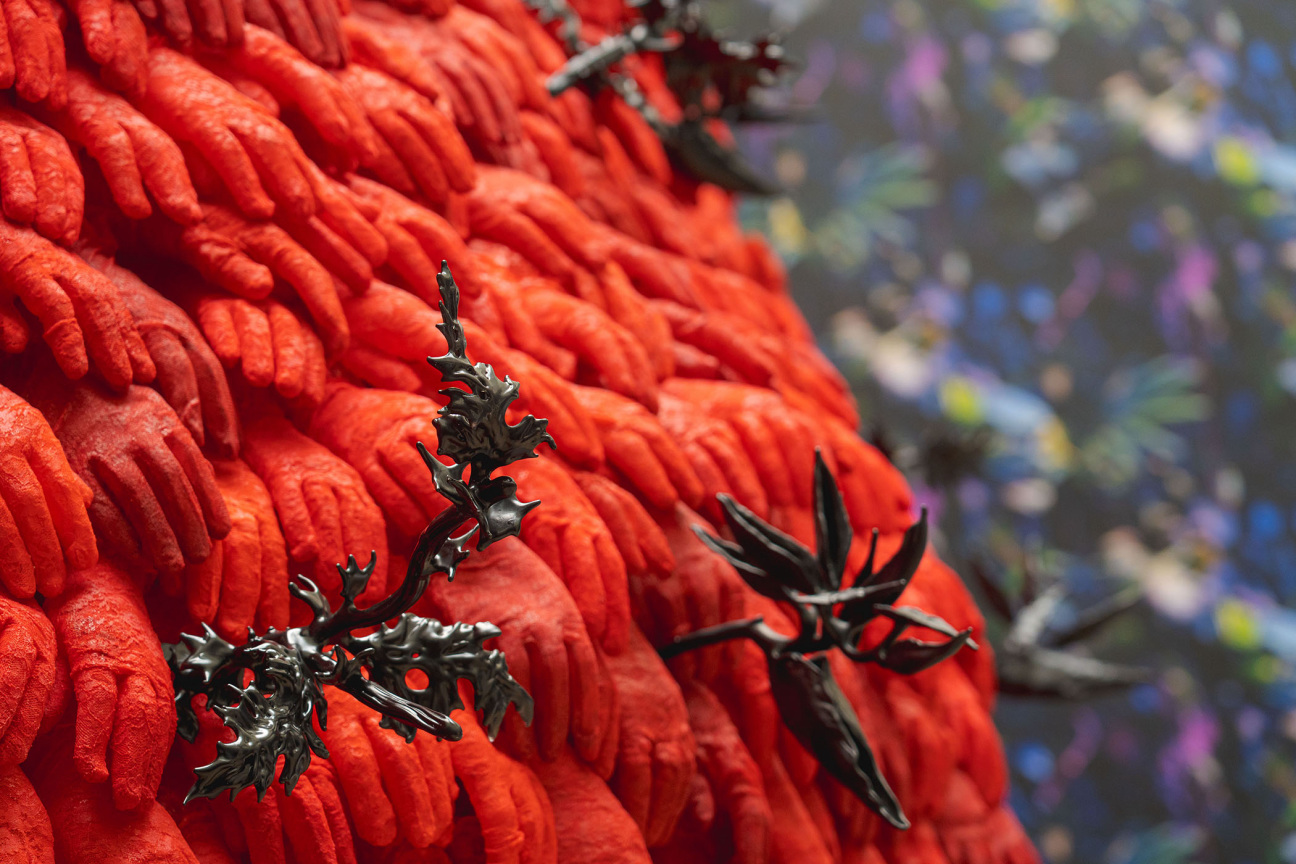
Also in the library are Patterson’s latest works on paper, which use florals to explore the notion of loss and what it could look like, and a recent video work that depicts two androgynous people caring for a child in a tropical forest, critiquing our notion of traditional gender roles.
At the core of Patterson’s intervention at the Botanical Garden is an understanding that every moment in life exists as part of a continuum, with things from the past informing the present—which will then inform the future. “[What] would it mean to resurrect those bodies and energies?” asks Patterson. What would it mean to reveal the realities that are sometimes hidden, even in plain sight, and for which her job becomes “to dig. I’m slowly digging and digging and looking and thinking. And then I go dig somewhere else.”
“…things come to thrive…in the shedding…in the molting…” will be on view from May 27 through September 17, 2023 at the New York Botanical Garden.










 in your life?
in your life?

